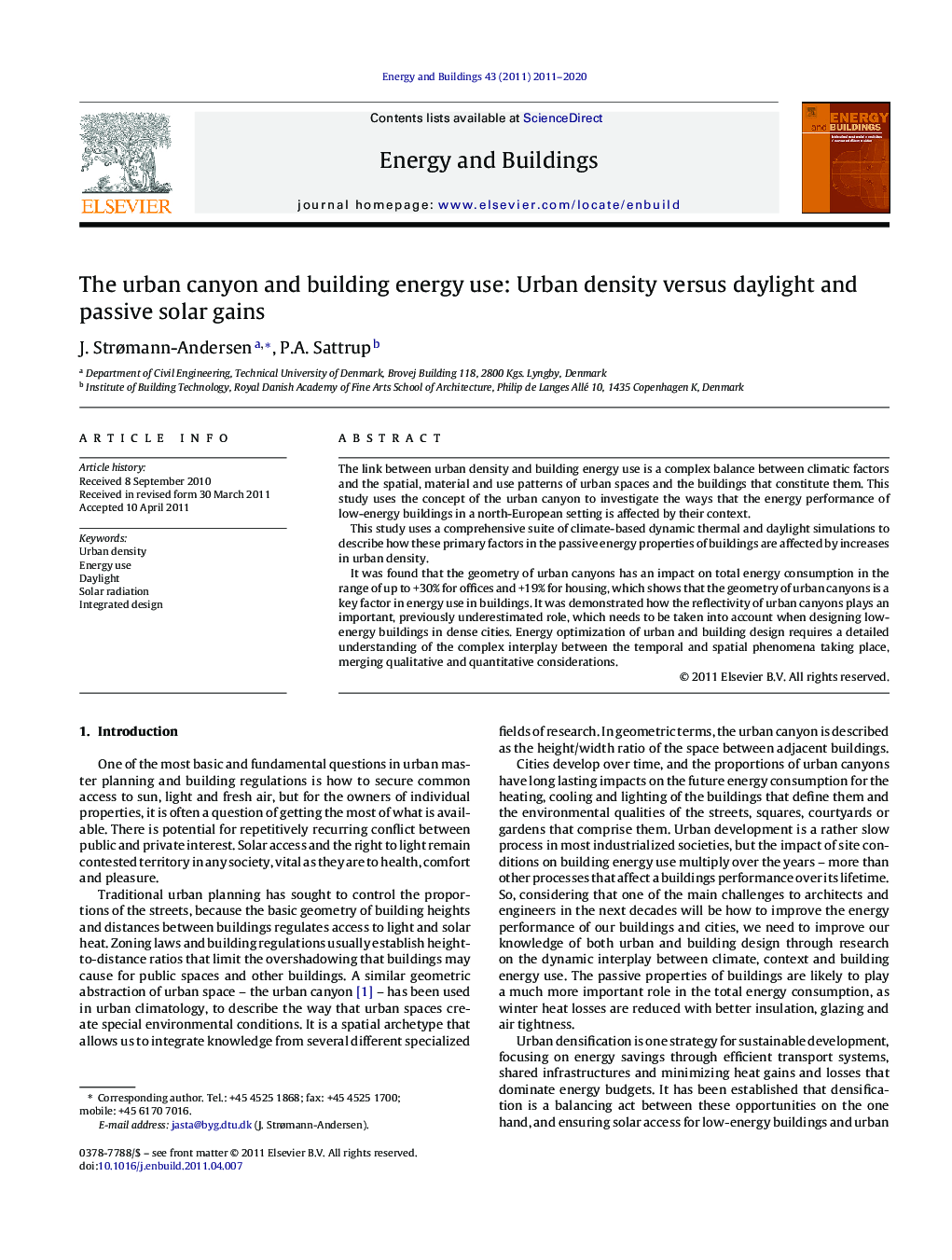| Article ID | Journal | Published Year | Pages | File Type |
|---|---|---|---|---|
| 264373 | Energy and Buildings | 2011 | 10 Pages |
The link between urban density and building energy use is a complex balance between climatic factors and the spatial, material and use patterns of urban spaces and the buildings that constitute them. This study uses the concept of the urban canyon to investigate the ways that the energy performance of low-energy buildings in a north-European setting is affected by their context.This study uses a comprehensive suite of climate-based dynamic thermal and daylight simulations to describe how these primary factors in the passive energy properties of buildings are affected by increases in urban density.It was found that the geometry of urban canyons has an impact on total energy consumption in the range of up to +30% for offices and +19% for housing, which shows that the geometry of urban canyons is a key factor in energy use in buildings. It was demonstrated how the reflectivity of urban canyons plays an important, previously underestimated role, which needs to be taken into account when designing low-energy buildings in dense cities. Energy optimization of urban and building design requires a detailed understanding of the complex interplay between the temporal and spatial phenomena taking place, merging qualitative and quantitative considerations.
► The link between urban density and building energy use is investigated. ► We use the concept of the urban canyon. ► We use a suite of climate-based dynamic thermal and daylight simulations. ► Urban canyons has an impact on energy use of up to +30% (offices) and +19% (housing). ► The reflectivity of urban canyons plays an important role for low-energy buildings.
